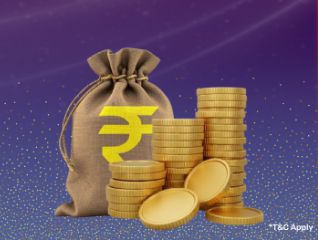History of Gold Price in India
Understanding the importance of gold in Indian traditions and markets
Gold holds strong cultural and financial value in India, often seen as a symbol of prosperity and security. Its price changes with global trends, inflation, and market demand. Exploring the gold price history in India helps buyers and investors understand long-term trends. During festivals and weddings, tracking rates becomes even more important. The gold price year wise and gold rate year wise chart highlight how gold’s value has evolved over time. Understanding the history of gold price and gold value history can guide better investment decisions by showing how gold has responded to various economic conditions over the years.
Historical gold rate trend in India
India’s relationship with gold is both emotional and economic. The country’s gold price history reflects changing financial landscapes, inflation trends, and global uncertainties. Analysing the gold price history in India helps investors understand long-term trends and make informed decisions.
- The history of gold price in India shows a steady rise over the decades, with key spikes during economic crises.
- In the 1990s, the rate was around ₹3,200 per 10 grams, gradually increasing to ₹4,400 by the early 2000s.
- The 2008 global financial crisis pushed rates close to ₹20,000 per 10 grams.
- In 2020, due to pandemic-related uncertainties, gold crossed ₹50,000 per 10 grams.
- The gold value history proves gold’s role as a safe and reliable investment.
- A gold rate year wise chart or gold rates year wise analysis helps identify patterns tied to major global and domestic events.
- Today, gold remains a preferred investment choice for Indian households.
Studying the gold rate trend in India
Studying the gold rate trend in India is essential for understanding how market dynamics have shaped its price over the years. The Indian gold market is heavily influenced by demand during festivals, inflation, and global factors. Over the past decades, the gold rate has followed an upward trend, with significant peaks during periods of economic uncertainty, such as the 2008 global financial crisis and the COVID-19 pandemic. Analysing the trend reveals that gold rates typically rise during economic slowdowns, serving as a hedge against inflation. Investors closely monitor historical trends to predict future movements and make informed decisions. By examining the long-term trajectory of gold prices, one can better understand how different economic and geopolitical factors play a role in determining gold's value in India.
Turn your gold into instant support—handle any expense with ease. Check your gold loan eligibility and access funds when you need them most.
How have gold prices evolved in India over the decades?
Gold has seen a steady rise in value, influenced by inflation, economic events, and investor demand. This gold rate year wise chart summarises key price points:
| Year | Approx. Gold Price (per 10g) | Key Economic Factor |
|---|---|---|
| 1960s | ₹63 | Stable post-independence economy |
| 1980s | ₹1,330 | High inflation and rupee depreciation |
| 1990s | ₹3,200 | Liberalisation and rising demand |
| 2008 | ₹20,000 | Global financial crisis |
| 2020 | ₹50,000+ | COVID-19 and market uncertainty |
This gold price year wise trend reflects how India’s gold price history has been shaped by both domestic and international factors. Referring to the gold value history helps investors understand long-term performance and plan accordingly.
Why are gold prices increasing?
Gold prices in India are rising due to a mix of global and local factors. A look at the gold price history in India shows that gold becomes more valuable during uncertain times.
- Economic uncertainty increases gold demand.
- Inflation makes gold a safer investment.
- Lower interest rates push people towards gold.
- A weaker rupee raises the cost of imported gold.
- Festival and wedding demand drives prices higher.
- The gold rate year wise chart shows steady growth.
- Studying the history of gold price helps understand these trends.
The gold value history clearly reflects gold’s growing importance.
Gold rates year-wise: A complete historical chart
Gold prices in India have steadily increased over the decades, influenced by economic crises, inflation, global demand, and geopolitical tensions. The gold price year wise trend clearly reflects how gold has remained a dependable investment option, especially in uncertain times.
- Prices have moved from ₹3,200 per 10 grams in 1990 to over ₹50,000 in 2020.
- Key surges occurred during the 2008 global crisis and the 2020 COVID-19 pandemic.
- The gold value history shows consistent growth in the long term.
- Studying the gold rate year wise chart helps understand how different events shaped market behaviour.
Here is a brief overview of gold rates year wise:
| Year | Approx. Gold Price (per 10g) | Key Factors |
|---|---|---|
| 1990 | ₹3,200 | Economic reforms, rising demand |
| 2010 | ₹18,000 | Global recovery post-2008 crisis |
| 2020 | ₹50,000+ | Pandemic, inflation, economic slowdown |
Tracking the gold price history in India helps investors make informed decisions.
It takes just 2 steps to check your eligibility for a Bajaj Finserv Gold Loan. Enter your mobile number now.
How global events have influenced gold prices over the years?
Global events have a direct influence on gold prices in India, often causing noticeable shifts during times of uncertainty. The following points explain how:
- The gold price history in India shows steady rises during global financial crises.
- Economic slowdowns lead investors to choose gold as a safe investment.
- In 2008, the global financial crisis caused a major jump in gold prices across markets.
- The COVID-19 pandemic in 2020 pushed gold rates above ₹50,000 per 10 grams.
- The gold value history reflects similar spikes during wars and geopolitical tensions.
- Trade conflicts and currency fluctuations also impact the gold price year wise.
- Reviewing gold rates year wise helps investors track how global issues affect local prices.
- A gold rate year wise chart offers clear insight into gold’s role as a stable asset during market uncertainty.
Which factors influence the gold price in India?
The gold price in India changes regularly due to multiple influencing factors:
- Demand usually spikes during festivals and wedding seasons, pushing prices up.
- Global demand and supply trends have a direct impact on local rates.
- Inflation and economic instability often lead investors to choose gold as a safer option.
- Currency exchange rates influence the cost of importing gold.
- Government policies, especially import duties, can either ease or increase price pressures.
- Geopolitical tensions and shifts in global stock markets often trigger price movement.
- Historical trends show gold reacts strongly to uncertainty in both domestic and global markets.
Why look at historical gold prices?
Looking at historical gold prices allows investors to identify patterns and trends that could influence future price movements. By studying the past, one can see how gold has reacted to economic crises, inflation, and other macroeconomic factors. It provides valuable insights into the metal’s behaviour during different periods, helping investors decide when to buy or sell. Historical data also highlights how gold has maintained its value over time, reinforcing its role as a reliable long-term investment. Moreover, analysing past prices helps gauge the impact of global events on gold, enabling better predictions of how current and future events may influence its rate.
Gold price history vs. Current market rates
Gold prices in India have shown consistent growth over the years, with both 22 and 24 karat gold rates influenced by global events, inflation, and market sentiment. Below is a comparison across key periods:
| Year | 22 Karat Gold (per 10g) | 24 Karat Gold (per 10g) | Key Context |
|---|---|---|---|
| 1990 | ₹2,900 | ₹3,200 | Stable economy, moderate demand |
| 2000 | ₹4,000 | ₹4,400 | Global calm, limited gold investment |
| 2010 | ₹17,000 | ₹18,500 | Post-2008 crisis, investment surge |
| 2020 | ₹46,000+ | ₹50,000+ | COVID-19 impact, safe-haven buying |
| Current | ₹66,000–₹67,000 | ₹71,000–₹72,000 | Inflation, geopolitical tensions, demand |
This trend reflects gold’s enduring appeal as a secure asset in uncertain times.
Planning to use your gold for quick funds? Check your gold loan eligibility now and see how much you can borrow instantly.
How to use historical data to predict future trends?
- Analyse how gold reacted during past economic crises to forecast future performance.
- Study inflation periods to gauge when gold prices may rise.
- Look at geopolitical events that previously triggered price fluctuations.
- Use patterns from previous years to predict peak demand periods.
- Combine historical data with current global trends to make informed investment decisions.
What was the gold price 20 years ago?
- Twenty years ago, in 2004, gold was priced around ₹5,800 per 10 grams.
- Gold prices were relatively stable, showing slow and steady growth.
- In comparison to today’s rates, gold has seen significant appreciation.
- The economic conditions back then were calmer, resulting in a lower price.
- Over two decades, gold has grown as a preferred investment option, particularly during financial downturns.
Year-wise gold price trends and how impact your gold loan
- Gold price trends directly affect the loan-to-value ratio for gold loans.
- A rising gold price increases the amount borrowers can avail against their gold.
- Falling gold rates may lead to higher interest rates or reduced loan amounts.
- Historical gold rates help assess the potential returns when leveraging gold for a loan.
- Borrowers benefit from studying year-wise trends to make better loan decisions.
The evolution of gold rates in India and its effect on gold loans
- The evolution of gold rates in India has significantly impacted the gold loan market.
- Over the decades, as gold prices have risen steadily, the loan amount against gold collateral has also increased.
- When gold rates rise, individuals can avail of larger loans at better terms, given the increased value of their collateral.
- Conversely, during periods of price decline, borrowers might face stricter loan conditions or lower disbursed amounts.
- The historical rise in gold prices has made gold loans a popular financing option in India, offering quick liquidity against the stable and appreciating value of gold.
Thus, understanding gold rate trends is crucial when considering a gold loan.
Manage planned to urgent expenses with ease. Check your gold loan eligibility now and make your gold work for your needs.
Related Articles
Disclaimer
Bajaj Finance Limited has the sole and absolute discretion, without assigning any reason to accept or reject any application. Terms and conditions apply*.
For customer support, call Personal Loan IVR: 7757 000 000









 Personal Loan
Personal Loan Check Eligibility
Check Eligibility Salaried Personal Loan
Salaried Personal Loan EMI Calculator
EMI Calculator Account Aggregator
Account Aggregator Credit Pulse Report
Credit Pulse Report
 Deals starting @99
Deals starting @99 Min. 50% off
Min. 50% off
 Bajaj Pay
Bajaj Pay Wallet to Bank
Wallet to Bank
 Easy EMI Loan
Easy EMI Loan Savings Offer
Savings Offer Smartphones
Smartphones Led TVs
Led TVs Washing Machines
Washing Machines Laptops
Laptops Refrigerators
Refrigerators Air Conditioner
Air Conditioner Air Coolers
Air Coolers
 Loan Against Shares
Loan Against Shares Loan Against Mutual Funds
Loan Against Mutual Funds Loan Against Insurance Policy
Loan Against Insurance Policy ESOP Financing
ESOP Financing Easy EMI Loan
Easy EMI Loan Two-wheeler Loan
Two-wheeler Loan Loan for Lawyer
Loan for Lawyer Industrial Equipment Finance
Industrial Equipment Finance Industrial Equipment Balance Transfer
Industrial Equipment Balance Transfer Industrial Equipment Refinance
Industrial Equipment Refinance Personal Loan Branch Locator
Personal Loan Branch Locator Used Tractor Loan
Used Tractor Loan Loan Against Tractor
Loan Against Tractor Tractor Loan Balance Transfer
Tractor Loan Balance Transfer Flexi
Flexi View All
View All
 Two-wheeler Loan
Two-wheeler Loan Bike
Bike Scooter
Scooter Electric Vehicle
Electric Vehicle Best Sellers
Best Sellers Popular Brands
Popular Brands

 Trading Account
Trading Account Open Demat Account
Open Demat Account Margin Trading Financing
Margin Trading Financing Share Market
Share Market Invest in IPO
Invest in IPO All stocks
All stocks Top gainers
Top gainers Top losers
Top losers 52 week high
52 week high 52 week low
52 week low Loan against shares
Loan against shares
 Home Loan
Home Loan Transfer your existing Home loan
Transfer your existing Home loan Loan against Property
Loan against Property Home Loan for Salaried
Home Loan for Salaried Home loan for self employed
Home loan for self employed Loan Against Property Balance Transfer
Loan Against Property Balance Transfer Home Loan EMI Calculator
Home Loan EMI Calculator Home Loan eligibility calculator
Home Loan eligibility calculator Home Loan balance transfer
Home Loan balance transfer View All
View All
 Term Life Insurance
Term Life Insurance ULIP Plan
ULIP Plan Savings Plan
Savings Plan Family Insurance
Family Insurance Senior Citizen Health Insurance
Senior Citizen Health Insurance Critical Illness Insurance
Critical Illness Insurance Child Health Insurance
Child Health Insurance Pregnancy and Maternity Health Insurance
Pregnancy and Maternity Health Insurance Individual Health Insurance
Individual Health Insurance Low Income Health Insurance
Low Income Health Insurance Student Health Insurance
Student Health Insurance Group Health Insurance
Group Health Insurance Retirement Plans
Retirement Plans Child Plans
Child Plans Investment Plans
Investment Plans
 Business Loan
Business Loan Secured Business Loan
Secured Business Loan Loan against property
Loan against property Loans against property balance transfer
Loans against property balance transfer Loan against shares
Loan against shares Home Loan
Home Loan Loans against mutual funds
Loans against mutual funds Loan against bonds
Loan against bonds Loan against insurance policy
Loan against insurance policy
 Apply for Gold Loan
Apply for Gold Loan Transfer your Gold Loan with Us
Transfer your Gold Loan with Us Gold Loan Branch Locator
Gold Loan Branch Locator
 ULIP Plan
ULIP Plan Savings Plan
Savings Plan Retirement Plans
Retirement Plans Child Plans
Child Plans Free Demat Account
Free Demat Account Invest in Stocks
Invest in Stocks Invest in IPO
Invest in IPO Margin Trading Facility
Margin Trading Facility Fixed Deposit Branch Locator
Fixed Deposit Branch Locator
 Check your Credit Score
Check your Credit Score
 New Car Loan
New Car Loan Used Car Loan
Used Car Loan Loan Against Car
Loan Against Car Car Loan Balance Transfer and Top-up
Car Loan Balance Transfer and Top-up My Garage
My Garage
 Get Bajaj Prime
Get Bajaj Prime
 Mobiles on EMI
Mobiles on EMI Electronics on EMI Offer
Electronics on EMI Offer  Iphone on EMI
Iphone on EMI LED TV on EMI
LED TV on EMI Refrigerator on EMI
Refrigerator on EMI Laptop on EMI
Laptop on EMI Kitchen appliances on EMI
Kitchen appliances on EMI Washing machines
Washing machines
 Personal Loan EMI Calculator
Personal Loan EMI Calculator Personal Loan Eligibility Calculator
Personal Loan Eligibility Calculator Home Loan EMI Calculator
Home Loan EMI Calculator Home Loan Eligibility Calculator
Home Loan Eligibility Calculator Good & Service Tax (GST) Calculator
Good & Service Tax (GST) Calculator Flexi Day Wise Interest Calculator
Flexi Day Wise Interest Calculator Flexi Transaction Calculator
Flexi Transaction Calculator Secured Business Loan Eligibility Calculator
Secured Business Loan Eligibility Calculator Fixed Deposits Interest Calculator
Fixed Deposits Interest Calculator Two wheeler Loan EMI Calculator
Two wheeler Loan EMI Calculator New Car Loan EMI Calculator
New Car Loan EMI Calculator Used Car Loan EMI Calculator
Used Car Loan EMI Calculator All Calculator
All Calculator Used Tractor Loan EMI Calculator
Used Tractor Loan EMI Calculator
 Hot Deals
Hot Deals Clearance Sale
Clearance Sale Kitchen Appliances
Kitchen Appliances Tyres
Tyres Camera & Accessories
Camera & Accessories Mattresses
Mattresses Furniture
Furniture Watches
Watches Music & Audio
Music & Audio Cycles
Cycles Mixer & Grinder
Mixer & Grinder Luggage & Travel
Luggage & Travel Fitness Equipment
Fitness Equipment Fans
Fans
 Personal Loan for Doctors
Personal Loan for Doctors Business loan for Doctors
Business loan for Doctors Home Loan
Home Loan Secured Business Loan
Secured Business Loan Loan against property
Loan against property Secured Business Loan Balance Transfer
Secured Business Loan Balance Transfer Loan against share
Loan against share Gold Loan
Gold Loan Medical Equipment Finance
Medical Equipment Finance
 Smart Hub
Smart Hub ITR Service
ITR Service Digi Sarkar
Digi Sarkar
 Savings Offer
Savings Offer Easy EMI
Easy EMI Offer World
Offer World 1 EMI OFF
1 EMI OFF New Launches
New Launches Zero Down Payment
Zero Down Payment Clearance Sale
Clearance Sale Bajaj Mall Sale
Bajaj Mall Sale
 Mobiles under ₹20,000
Mobiles under ₹20,000 Mobiles under ₹25,000
Mobiles under ₹25,000 Mobiles under ₹30,000
Mobiles under ₹30,000 Mobiles under ₹35,000
Mobiles under ₹35,000 Mobiles under ₹40,000
Mobiles under ₹40,000 Mobiles under ₹50,000
Mobiles under ₹50,000
 Articles
Articles
 Overdue Payments
Overdue Payments Other Payments
Other Payments
 Document Center
Document Center Bank details & Documents
Bank details & Documents Tax Invoice Certificate
Tax Invoice Certificate
 Do Not Call Service
Do Not Call Service
 Hamara Mall Orders
Hamara Mall Orders

 Fixed Deposit (IFA) Partner
Fixed Deposit (IFA) Partner Loan (DSA) Partner
Loan (DSA) Partner Debt Management Partner
Debt Management Partner EMI Network Partner
EMI Network Partner Became a Merchant
Became a Merchant Partner Sign-in
Partner Sign-in
 Trade directly with your Demat A/c
Trade directly with your Demat A/c ITR
ITR My Garage
My Garage
 Live Videos - Beta
Live Videos - Beta
 Savings Offer
Savings Offer Smartphones
Smartphones LED TVs
LED TVs Washing Machines
Washing Machines Laptops
Laptops Refrigerators
Refrigerators Air Conditioners
Air Conditioners Air Coolers
Air Coolers Water Purifiers
Water Purifiers Tablets
Tablets Kitchen Appliances
Kitchen Appliances Mattresses
Mattresses Furniture
Furniture Music and Audio
Music and Audio Cameras & Accessories
Cameras & Accessories Cycle
Cycle Watches
Watches Tyres
Tyres Luggage & Travel
Luggage & Travel Fitness Equipment
Fitness Equipment Tractor
Tractor Easy EMI Loan
Easy EMI Loan
 vivo Mobiles
vivo Mobiles OPPO Mobiles
OPPO Mobiles Xiaomi Mobiles
Xiaomi Mobiles Sony LED TVs
Sony LED TVs Samsung LED TVs
Samsung LED TVs LG LED TVs
LG LED TVs Haier LED TVs
Haier LED TVs Godrej Refrigerators
Godrej Refrigerators Voltas Washing Machines
Voltas Washing Machines
 New Tractor Loan
New Tractor Loan Used Tractor Loan
Used Tractor Loan Loan Against Tractor
Loan Against Tractor Tractor Loan Balance Transfer
Tractor Loan Balance Transfer
 New Car Loan
New Car Loan New Cars Under ₹10 Lakh
New Cars Under ₹10 Lakh New Cars – ₹10–₹15 Lakh
New Cars – ₹10–₹15 Lakh New Cars – ₹15–₹20 Lakh
New Cars – ₹15–₹20 Lakh New Cars – ₹20–₹25 Lakh
New Cars – ₹20–₹25 Lakh New Car Brands
New Car Brands Petrol – New Cars
Petrol – New Cars Diesel – New Cars
Diesel – New Cars Electric – New Cars
Electric – New Cars CNG – New Cars
CNG – New Cars Hybrid – New Cars
Hybrid – New Cars




